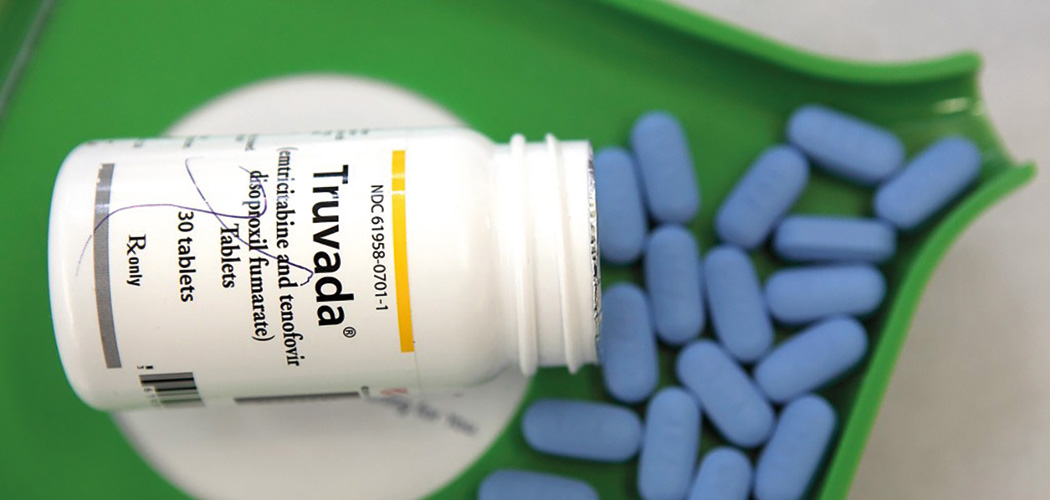Each month in Boyz the team from NAM aidsmap report the latest news on HIV and sexual health. You can also keep up to date and read more on their website at aidsmap.com.
Who is at greatest risk of getting HIV?
Although HIV infections are falling, over half of people newly diagnosed with HIV in the UK are still gay or bisexual men. But which of us are most likely to get HIV? Who has the greatest need to take PrEP (pre-exposure prophylaxis) or do something else to protect themselves from HIV?
Professor Sheena McCormack of the Medical Research Council has been looking back at data from the PROUD study to find out. This was the English study of PrEP which released its results in 2015 and showed how effective it really is.

But in the study, only half of those taking part got PrEP immediately. In the men who didn’t get PrEP, 9% acquired HIV each year. The researchers wanted to see if they could better understand which men got HIV and which men did not.
They found two key risk factors – sexually transmitted infections in the rectum (bum) and having condomless sex with multiple partners.
In men who had had rectal gonorrhoea, rectal chlamydia or syphilis, 17% became HIV positive in one year.
In men who had had receptive anal sex, without a condom, with at least two partners in the previous three months, 14% became HIV positive in one year.
In contrast, only 1% of men with neither of these risk factors became HIV positive. Having an STI in the throat or penis wasn’t linked to acquiring HIV.
The researchers say that gay or bi men with a rectal STI, syphilis or multiple condomless partners “should be offered PrEP as a matter of urgency.”
Read more at aidsmap.com/page/3474093
Almost everyone cured with modern hepatitis C drugs
For many years, treatment for hepatitis C had a reputation for being difficult to tolerate and quite often ineffective. People often needed to take the treatment for six months or a year, and it always included pegylated interferon, an injection that gave many people unpleasant side-effects. People who had both HIV and hepatitis C had worse results than people who did not have HIV.
Hepatitis C treatment has been transformed in the last few years. Modern treatments last 12 weeks or less, only involve tablets and have far fewer side-effects. They are much more likely to work.
The latest innovation in hepatitis C treatment is the development of drugs which can treat all ‘genotypes’ (strains) of hepatitis C. Until recently, doctors had to select different medications for different patients, according to which genotype they had. This is no longer necessary.
These pills are curing almost everyone who completes the course of treatment and drop-out rates are low. In over 5000 people who started the treatments in North America and Europe, 93% were cured of hepatitis C (what doctors call a ‘sustained virological response’ at 12 weeks). Next, looking only at those people who completed the course of treatment, 98.5% were cured.
People who have both HIV and hepatitis C do just as well as those who only have hepatitis C. In this study, 4% of people were also living with HIV.
Although these medications can cure you of hepatitis C, they do not protect against future infection. It is possible to become re-infected with hepatitis C if risky behaviour continues.
You’re less likely to get hepatitis C if you use condoms, use gloves when fisting, avoid sharing sex toys, don’t share pots of lube at sex parties, don’t share straws or notes to snort drugs, and don’t share drug injection equipment. If you think you might be at risk of hepatitis C, ask about testing the next time you go for a sexual health check-up.
Read more at aidsmap.com/page/3475930 and aidsmap.com/page/1506073
More evidence that undetectable = untransmittable
As the BBC headline put it, “Gay HIV transmission with treatment is ‘zero risk’, study confirms”. For people closely involved with HIV this isn’t new information, but it’s fantastic to have this vital information splashed across the media.
In a large and well-conducted study, there were no transmissions between gay couples where the HIV-positive partner was taking HIV treatment and had an undetectable viral load – even though there were nearly 77,000 acts of condomless sex between them.
The research findings were first presented by Professor Alison Rodger of University College London at a conference last summer. It was an important story for NAM aidsmap and for other HIV support organisations, but not many newspapers or TV stations picked up on it.
Since then the research has been scrutinised and approved by other scientists. It has now been published in the prestigious medical journal The Lancet.
“Our findings provide conclusive evidence that the risk of HIV transmission through anal sex when HIV viral load is suppressed is effectively zero,” Professor Rodger said. “This powerful message can help end the HIV pandemic by preventing HIV transmission, and tackling the stigma and discrimination that many people with HIV face.”
Read more at aidsmap.com/page/3311249 and aidsmap.com/page/1044617
No reduction in HIV stigma
While we hope that better understanding of undetectable = untransmittable will help reduce stigma towards people living with HIV, there is no sign that stigma is falling yet.
In 2013, San Francisco adopted a ‘Getting to Zero’ HIV strategy, with the aim of getting to zero new HIV infections, zero HIV deaths, and zero HIV stigma by 2030.
While there has been great progress on the first two points, there’s been no reduction in stigma. In surveys done several times in the past eight years, over 20% of gay and bisexual men said that most people in San Francisco would discriminate against someone living with HIV.
Read more at aidsmap.com/page/3476065 and aidsmap.com/stigma

For more of the latest news and information about HIV and sexual health visit aidsmap.com














